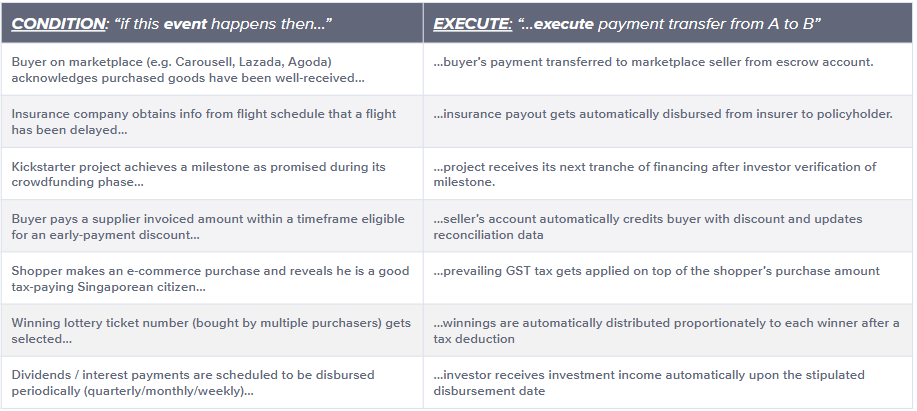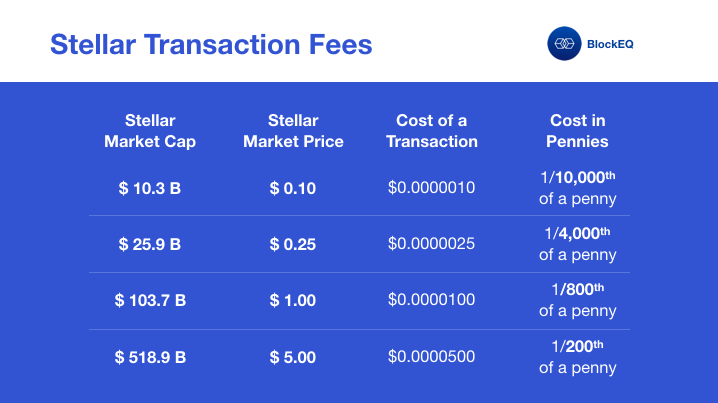Latest news about Bitcoin and all cryptocurrencies. Your daily crypto news habit.
As we grow accustomed to the sight of everyday Singaporean moms and pops tap their phones at their local grocery outlet for payments, one can’t help but marvel at the pace and receptiveness at which our young nation has welcomed innovations in payments with open arms. This is especially resonating, considering the strategic focus which we have detailed towards planning out our e-payments infrastructure for the next five years.
Perhaps this was always ingrained somewhere in our DNA. Lost between the sands of time was the fact that “money” at different points in Singapore’s history meant many different things; from Chinese Song dynasty coins in the 14th century, the Indian rupee and Mexican dollar during the early 19th century, to even a whole smattering of silver dollar coins produced by far-flung nations such as Peru and Bolivia during the later half of the 1800s.
When it came to how commerce was conducted and payment settled, traders based in early Singapore simply adapted to the circumstances as they unfurled; how will we today, as an aspiring, self-proclaimed ‘Smart Nation’, adapt to the challenges of tomorrow in this regard?
This is where we argue why SGDR, a Singapore-dollar denominated, price-stable crypto-asset (affectionately termed by the blockchain industry as a “stablecoin”), will have a huge role to play in helping to forge this next chapter of our journey towards being a Smart Nation.
But what exactly is a Smart Nation?
Smart Nation is a Singaporean government initiative to harness infocomm technologies, networks and big data to create tech-enabled solutions.
Basically, the government wishes to build a high-tech Singapore with the latest technologies leveraging networks and data — what has long been touted to be the new ‘black gold’. Networks — such as Grab and Airbnb — grow in strength as the number of new users come on board, which in turn lead to more of this ‘black gold’ being created — but why is that exactly important?
We’re into the early days of the Fourth Industrial Revolution where advances in artificial intelligence technologies — fueled by exponential growths in both the availability of computing power in small microprocessors, as well as the sheer overwhelming amounts of data from all walks of our lives that is being created, stored and analyzed — will result in an exponential change in our everyday products and lifestyles.
The increased amount of data on hand allows for products that are designed with the ability to predict and automate actions better (such as how Youtube is able to recommend videos to watch), which in turns draws in more users owing to the better experience. These new users then contribute to more data being created, which consequently allows for the prediction models to be better fine-tuned and deliver an even better user experience in future. Which then draws in more users. Thus, a virtuous cycle is formed.

The initiatives in Smart Nation are meant to ensure that Singapore is well prepared to leverage on this new macro-trend leveraging upon data and computing power as basic building blocks. It is clear that the Singaporean government hasn’t simply just paid lip service to this lofty ambition — the meticulous details of the initiatives being planned shows otherwise.
Why would today’s payments infrastructure be incompatible with Smart Nation?
Stablecoins like SGDR helps bring to the masses the benefits of cryptocurrency minus the price volatility.
It allows for cheap, fast and programmable transactions, which will in turn help unlock payment models that are not readily viable with the payments infrastructure of today, such as micropayments and event-driven payments.
To illustrate, fast and ultra-cheap transactions opens up the use case of paying an online video content provider directly without a middleman on a per-hour-watched micropayment basis, rather than on a subscription model.
The minimum per transaction fees which incumbents charge prohibits that today. To illustrate, according to their website Stripe charges 3.4% + SGD 0.50 on each transaction (these includes the fees which Stripe needs to pass on to the banks and the credit card network schemes like Visa and Mastercard; custom bulk discounts are available).
Contrast that against the per transaction fees on the Stellar blockchain — which will be leveraged by SGRR — whereby it only takes USD 0.01 to pay for 10,000 transactions currently:
More excitingly, the programmability of SGDR allows for event-driven payments — which is akin to someone receiving payment on condition of something else happening. We simply can’t perform the same today, owing to the lack of programmability features in today’s digital money.
For instance, I am not able to independently design an application leveraging GrabPay credits to build an application that provides automatic flight insurance payouts, owing to a) the proprietary, closed-loop nature of the GrabPay currency and b) the lack of a programming language native to the currency.

Utilities — On-demand billing and rebates
In order to optimize resource usage, Smart Nation intends to incorporate dynamic electricity and water pricing schemes, based on the time of day and the amount being consumed by all households.
The collective data gathered from all households will allow for accurate predictive pricing models for both electricity and water.
This will allow an individual consumer to view exactly how much he is consuming — and spending — on a per second basis, for a single particular activity at any point in time. He may then for example choose to program his dishwasher to only begin its next dishwashing cycle at a point in the day where electricity and water consumption is at its lowest.
Or he may be incentivized to reduce his overall consumption patterns due to gamification rewards, whereby him lowering utilities usage to fall within a certain tier would entitle him to a pricing rebate that is instantly paid out. He could even earn money with every passing second during the day, by installing and selling solar panel-generated electricity back to the grid. Before then using all those rebates and income for dinner in the evening!
The complex nature of payments required of this initiative would dovetail nicely with the low transaction fees of SGDR (for making and receiving real-time micropayments) as well as its programmability (integrating the predictive pricing models with the logic behind gamification rewards).
Autonomous Vehicles — Because cars need to pay their bills too
The revolutionary impact which autonomous vehicles (AVs) are to have on humankind is likely to surpass that of the previous automobile revolution where cars replaced horses, and the explosion in road imagery data available for analysis is key to that. As part of a Smart Nations initiative, Singapore has devoted a sizeable amount of resources into this space as well to ensure that its citizens are able to reap the rewards of deploying AVs en masse. These would include benefits such as reduced traffic congestion, more efficient on-demand vehicle services and fewer accidents.

AVs will still require to make and take payments of small amounts across regular daily cycles, such as when they pass a road toll, obtain an electrical recharge or enter a workshop for maintenance, or when commuters board them, therefore making it essential for the cost per payment to remain low.
In addition, AVs can be programmed to give commuters the flexibility of deciding the urgency and speed at which they wish to travel. This will allow for example, someone in a hurry to pay a premium on her ride to be afforded the right of way. The bonus amount will be shared across commuters occupying the other AVs that are willing to travel at a more leisurely pace along the same route.
Such complex, dynamic calculations and payment activity will invariably require a form of smart, programmable money for it to be executed seamlessly.
IoT — Data monetization for the masses
To the layperson, the term Internet-of-Things (IoT) probably brings about all sorts imagery from the movie The Matrix, with machines being in control of the daily aspects of our lives. They will be surprised to find out that we’re already living in the IoT era — with ‘things’ such as our smartphones, watches, fitness wearables, televisions, cars, cameras and home thermostats all already being connected to the Internet today and being used in our lives.
With technological developments including more powerful microprocessor chipsand the impending 5G mobile network to ride on, it won’t be long before even more mundane objects such as refrigerators, drones, street lights and even road pavements become IoT-connected devices as well.
The primary purpose of these IoT devices is to collect data that is to be fed to a predictive model that governs the actions of a product.
This will present an opportunity for consumers to “farm data” for passive income — for example by selling anonymized data which their fitness wearables collect about their daily activities, to a sports equipment manufacturer. The alternative would be for the device manufacturer to own the data that is collected — be it by consensual or other means — before selling it on. Such companies will likely lose out in sales to one that transparently allows the data to be in the control of the users.
A key Smart Nation initiative termed as the “Punggol digital district” strives to foster a high-tech living and working ecosystem, with IoT devices being at the heart of a data economy. Payments for the data will be small and frequent in nature — therefore necessitating for a tool like SGDR to allow for cheap and fast micropayments.
Conclusion
The ultimate objective for Smart Nation is to build a “thriving future for Singapore in the digital era”. Our location as a hub gave us a strategic advantage historically when it came to the trading of physical goods. What will allow Singapore to also possess this advantage as we enter the digital age, where digital assets — such as data — begin trading internationally and freely without physical borders? Why would a company choose to limit itself to purchase training data for its prediction models to just its home country, when the market for it is truly global?
The initiatives planned in Smart Nation are definitely a step in the right direction. On the whole, other key factors necessary in order for Singapore to push on would include favourable regulations, a culture of innovation, incentives to encourage early adopters as well as financial and human capital.
While having previously acknowledged that central banks entering the fray with central bank digital currencies (CBDCs) are likely to happen, we do not think that this is something that can be implemented within the next 2–3 years at least.
Multiple rounds of internal reiterations will probably be involved before Project Ubin evolves from being mainly a wholesale banking and securities trading settlement-focused project, to one where retail payments also come into play, owing to the following systemic risks that will affect Singapore’s monetary policy.
The Monetary Authority of Singapore will need to evaluate the impact of issuing CBDC dollars via the current fractional reserve system — and whether doing so will affect the tools they have on hand to tweak their exchange rate policy (for use when the MAS needs to expand or contract the monetary base).
The alternative, should they go with a full 1:1 collateralization model during the issuance of CBDC dollars (i.e. keeping SGD 1 dollar for each CBDC dollar in circulation), would in theory simplify matters, but could have a huge impact on the liquidity of the monetary base, should large amounts of CBDC dollars be demanded by for example the trade finance sector. (Remember — banks right now have the ability through fractional reserve banking to issue out more financial capital — such as trade finance loans — into the system, than the dollar deposits backing it).
It is however crucial that private sector innovations in Singapore are still given as much of a head start as possible relative to their international peers.
In the 2–3 years it takes for the government to decide their approach towards issuing CBDCs, there could already be a whole myriad of experimental case studies in place contributed by the private sector, which will in turn attract more financial and human capital to the nation.
This time frame could in fact allow a product leveraging upon network effects to establish a strong, defensible advantage over and above their international peers, due to a virtuous cycle of data-driven product reiterations.
In light of our transition towards a Smart Nation, perhaps it is time again for “money” to again mean something else — one that is programmable and smart, and therefore designed for the smart economies of the future.
Disclosure: I work at Rate3 Network, a protocol that handles asset-tokenization and identity management across both Ethereum and Stellar blockchains
Singapore’s Transition Into A Smart Nation Will Require ‘Smart Money’ was originally published in Hacker Noon on Medium, where people are continuing the conversation by highlighting and responding to this story.
Disclaimer
The views and opinions expressed in this article are solely those of the authors and do not reflect the views of Bitcoin Insider. Every investment and trading move involves risk - this is especially true for cryptocurrencies given their volatility. We strongly advise our readers to conduct their own research when making a decision.

